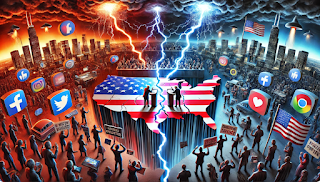🗓️ InvestorHire News | April 18, 2025
Trump Warns of Israeli-Assisted Strikes if Iran Refuses Nuclear Disarmament
A High-Stakes Showdown Rooted in Decades of Violence
By Jacqueline Valentine | InvestorHire News Contributor
WASHINGTON, D.C. — As U.S. and Iranian officials gear up for a second round of indirect nuclear talks this Saturday in Rome, mediated by Omani diplomats, former President Donald Trump made his position unmistakably clear: Iran must never obtain a nuclear weapon.
“With Iran, they can’t have a nuclear weapon. And if they do… you’ll be very unhappy,” Trump warned reporters Friday.
“I want Iran to be great and prosperous and terrific — but without nuclear weapons.”
This latest message underscores Trump’s unwavering approach since 2018, when he withdrew the United States from the Obama-era Joint Comprehensive Plan of Action (JCPOA), a landmark nuclear deal that aimed to curb Iran’s uranium enrichment in exchange for sanctions relief.
Now, Trump’s top advisors — including Defense Secretary Pete Hegseth and Middle East Envoy Steve Witkoff — are pushing for a total dismantling of Iran’s nuclear infrastructure, not just the weapons development component.
A Revolutionary Legacy: From Shah to Supreme Leader
Iran’s nuclear ambitions trace back to the 1950s, when the Western-backed Shah partnered with the United States under the “Atoms for Peace” program to develop peaceful nuclear energy. But that trajectory changed drastically after the 1979 Islamic Revolution.
With the fall of the Shah and the rise of Ayatollah Khomeini, Iran became a theocracy rooted in anti-Western ideology. The new regime quickly severed ties with the U.S., branded it “The Great Satan,” and began a campaign to export its revolutionary ideals across the Middle East — often through armed proxies.
Iran and Hamas: An Explosive Alliance
Among those proxies, none has benefited more from Iranian backing than Hamas, the Palestinian militant group that governs Gaza and is considered a terrorist organization by the U.S., European Union, and others.
Despite sectarian differences — Hamas is Sunni, and Iran is a Shiite theocracy — the two have maintained a powerful alliance centered on their mutual goal: the destruction of Israel.
Iran’s support has included:
-
Hundreds of millions of dollars in funding
-
Advanced weaponry, including long-range rockets and drones
-
Military training and intelligence sharing, often facilitated by Iran’s elite Revolutionary Guard Corps (IRGC)
This relationship has empowered Hamas to launch massive attacks on Israeli cities, destabilizing the region and complicating peace efforts for decades.
Nuclear Nightmare: What If Iran Succeeds?
If Iran were to acquire a nuclear weapon, the consequences could be catastrophic and far-reaching:
-
A Middle East arms race — Regional rivals like Saudi Arabia, Egypt, and Turkey may pursue nuclear arms to restore strategic balance.
-
Expanded terror funding — Iran could more aggressively fund Hezbollah, Hamas, and the Houthis with the protection of nuclear deterrence.
-
Diminished Western leverage — Diplomatic efforts to curb Iranian influence would be undercut by the looming threat of nuclear retaliation.
-
Israeli preemptive strikes — Israel has a history of targeting nuclear sites (e.g., Iraq in 1981, Syria in 2007) and has strongly hinted it may act alone against Iran.
“Israel will act — with or without U.S. support — if Iran crosses the line,” a former Israeli intelligence officer told InvestorHire News on condition of anonymity.
The Road Ahead: Diplomacy or Disaster?
Saturday’s talks in Rome will be led by Steve Witkoff, who has warned that no agreement will be accepted unless Iran fully eliminates its enrichment and weaponization capabilities. However, Tehran is known for its strategic delay tactics, and experts say a meaningful breakthrough is unlikely.
Meanwhile, Trump’s suggestion of Israeli-assisted military strikes could either serve as a final warning — or the first domino in a wider regional conflict.
As the world watches, the implications stretch far beyond Iran’s borders. This moment could define the next chapter of global security, Middle East power dynamics, and American foreign policy.










